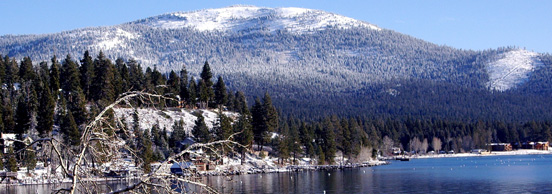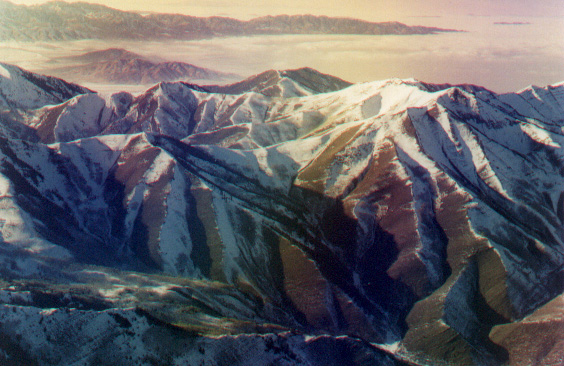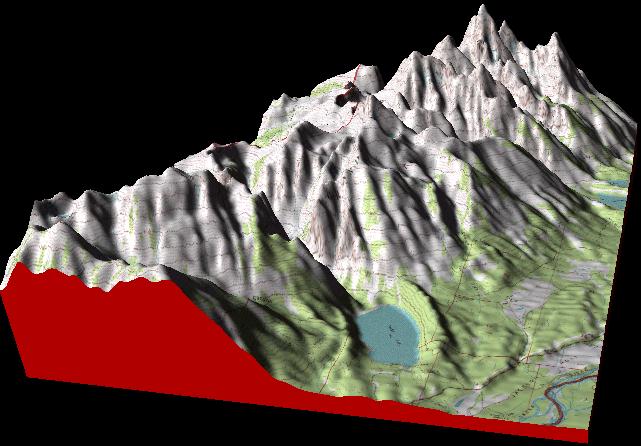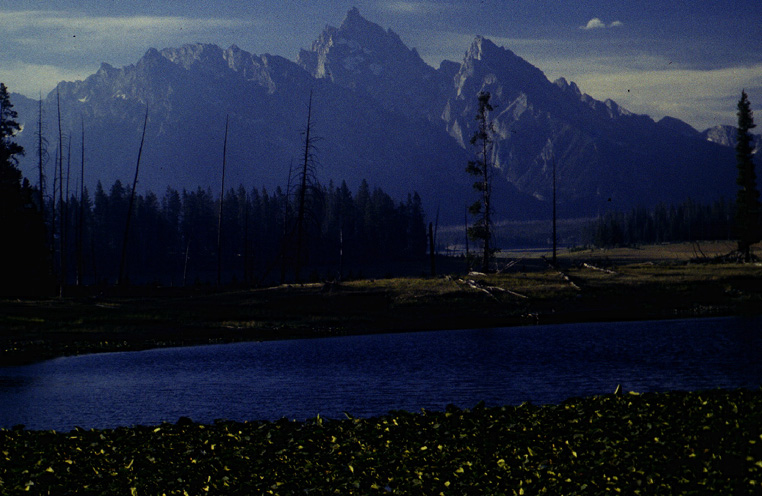
Surface water's importance in the arid western United States.
Lake Tahoe watershed.
Thirty-eight percent an unusually high proportion of the Tahoe drainage basin of 500 square miles is occupied by the deep waters of Lake Tahoe itself making this scenic jewel in the crown of the central Sierra Mountains a magnet for residents and visitors alike. Like humans, both animals and plants are necessarily attracted to this isolated refuge of diversity amidst an arid terrain of sage brush and scrub.
Despite the scarcity of water in the west, abrupt climate change and global warming is affecting the species compostition of the lake and its surrounding terrain bcause the water's deep profile acts as a thermal storage source for the incoming solar radiation.
 Climate change is strikingly revealed in the chemistry & physical properties of Lake Tahoe's water.
Climate change is strikingly revealed in the chemistry & physical properties of Lake Tahoe's water.
Studies on the physical limnology of the lake have included weekly to monthly temperature profiles since 1969, with surface measurements from 1964. These data afford an opportunity to examine long-term trends in the lake’s thermal structure, and to relate trends to possible driving climatic variables.
The deep water of large lakes is an attractive place to look for a signal of climate change. While the surface and near-surface temperature reflects daily and seasonal temperature changes, this short-term “noise” is filtered out in the deep water, where temperature responds on a time scale of years or decades. The deep water is said to retain a “climatic memory” (Ambrosetti and Barbanti, 1999; Livingstone, 1993). In Lake Tahoe, the lack of annual deep mixing allows the storage of heat slowly transported downward over a period of years, with partial “resetting” of the deep water to cooler temperatures when deep mixing does occur.
Warming trends and changes in thermal structure.
Trends in the climatic drivers include 1) upward trends in maximum and minimum daily air temperature at Tahoe City; and 2) a slight upward trend in downward long-wave radiation. Changes in the thermal structure of the lake include 1) a long-term warming trend, with the highest rates near the surface and at 400 meters; 2) an increase in the resistance of the lake to mixing and stratification, as measured by the Schmidt Stability and Birge Work; 3) a trend toward decreasing depth of the October thermocline. The long-term changes in the thermal structure of Lake Tahoe may interact with and exacerbate the well-documented trends in the lake’s clarity and primary productivity.
Lake Tahoe is the largest entire lake in North America, and the most oligotrophic
lake in the world for which a warming trend has been documented and related to
climatic variables. It is unique in terms of the research and management efforts that have been invested in maintaining clarity and water quality.
2.1. PHYSICAL CHARACTERISTICS OF LAKE TAHOE
Lake Tahoe has a surface area of 501 km2, and a total volume of 157 km3. Maximum depth is 500 m at maximum lake level (Gardner et al., 1998), making it the third deepest lake in North America, and the 11th deepest lake in the world. The lake is large relative to the total drainage basin area of 1310 km2, so its hydraulic residence time is long–about 650 yr. It never freezes, and is oligomictic, mixing completely only in years of intense spring storms (Goldman et al., 1989; Wetzel, 2001).

Utah, mountain watershed south of the Great Salt Lake.


Two views of Jenny Lake at the foot of the Teton Mountain Range.
Jenny Lake, formed by melting glaciers about 60,000 years ago, is a wild mountain lake set in the heart of Grand Teton National Park, at the base of Teewinot Mountain. The west side of the lake touches the Teton Mountain Range. The lake is about 260 feet deep at the deepest point. Grand Teton National Park facts.
THE WARMING OF LAKE TAHOE. ROBERT COATS, JOAQUIM PEREZ-LOSADA, GEOFFREY SCHLADOW,
ROBERT RICHARDS, and CHARLES GOLDMAN. 2006. pp. 121-122.
The relation of water availability and climate | Impacts on Lake Tahoe | water and ethics | caldera